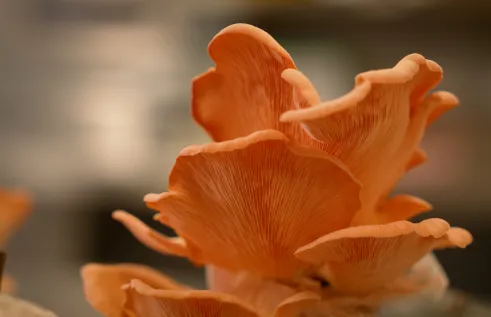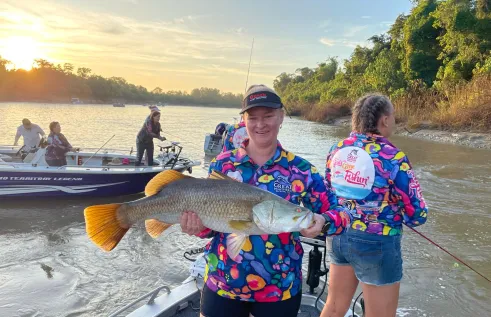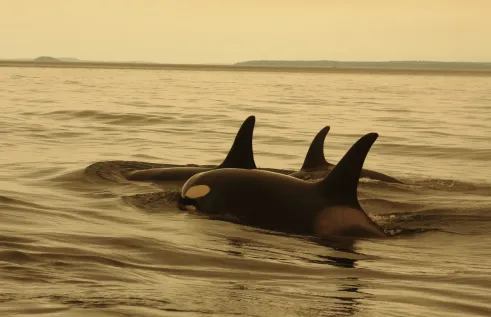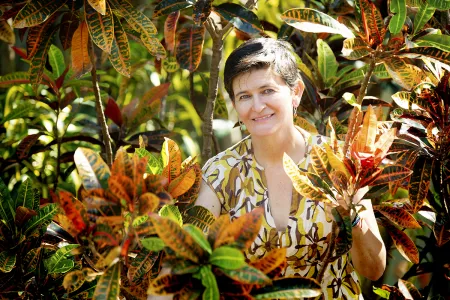News Article
Research identifies pathways of alien arrivals
More than 1600 alien species have found their way to the UNESCO World Heritage-listed Galápagos Islands threatening native wildlife, research reveals.
Charles Darwin University PhD candidate Veronica Toral-Granda said introduced species were among the top threats to biodiversity on oceanic islands, with their arrival and spread closely linked to human trade and travel.
“Since their discovery in 1535, the sailors, pirates, settlers, and tourists arriving on the Galapagos Islands have been accompanied by hundreds of exotic species, some of which have become highly invasive," Veronica said.
She said that most of the unintentional introductions, such as insects, had arrived on plants and plant-associated material, followed by transport vehicles, and commodities – particularly fruit and vegetables.
The invasion of alien species began with the introduction of goats and rats by whalers and buccaneers, and although both species were eradicated on some islands by government control programs, Veronica said significant threats remained.
“Species such as the introduced parasitic fly Philornis downsi are causing close to 100% mortality rates of nestlings of some of the iconic Darwin finch species,” she said.
She said it was important to identify the pathways of arrival to prevent future spread and risk to native wildlife and the local industries, including tourism.
“It’s a catch 22 because the tourists who come to see the islands are now essential to the economy and also help fund its ongoing conservation management,” she said.
Of the 1637 species introduced to Galápagos, more than 70% had arrived since the start of tourism in the 1970s. Vessels carrying tourists now link 111 of the 169 sites across the terrestrial park and marine reserve.
“The tourist hub of Puerto Ayora, on Santa Cruz island, is linked to many tourist sites harbouring unique wildlife species,” she said. “This area has recorded the highest number of introduced species, greatly increasing the risk of spreading introduced species to protected areas of the Galápagos.”
Veronica said that vector risk analysis had identified, on average, one in every 11 boats arriving in Galápagos brought in an introduced species; and about one in every 876 aircraft.
She said that despite Ecuadorian Government efforts to implement biosecurity protocols, more needed to be done to manage the invasion pathways so that the site’s biodiversity values were retained.
“Galápagos has exceptionally high levels of endemism, which means that the species under threat are not found anywhere else in the world,” she said.
She warned that tourism needed to be managed and safeguards put in place to ensure ongoing conservation management and protection of native wildlife.
The research is supported by an Australian Research Training Program scholarship. The databases underpinning this research were provided by the Ecuadorian Ministry of Environment through the Directorate of the Galápagos National Park and the Galápagos Biosecurity Agency; the Ministry of Tourism through the Tourism Monitoring System (Observatorio de Turismo de Galápagos); the Ecuadorian Civil Aviation Directorate and the Charles Darwin Foundation.
Related Articles

Cotton trash to treasure: Project using waste to grow new mushroom industry
Supermarket shelves could be stocked with mushrooms grown from the Northern Territory’s cotton waste, with a Charles Darwin University research project exploring the possibility of broadening the region’s agricultural industry.
Read more about Cotton trash to treasure: Project using waste to grow new mushroom industry
Stereotypes holding back Australia’s recreational fishing future, new study finds
Outdated stereotypes about who a “real fisher” is could be costing Australia’s recreational fishing industry valuable talent, creativity, and growth, new research from Charles Darwin University suggests.
Read more about Stereotypes holding back Australia’s recreational fishing future, new study finds
Global body adopts policy to protect Earth’s old, wise and large animals
The International Union for Conservation of Nature (IUCN) has recognised Charles Darwin University-led research into the Earth’s oldest animals with the adoption of the ‘Longevity Conservation’ global policy principle.
Read more about Global body adopts policy to protect Earth’s old, wise and large animals
